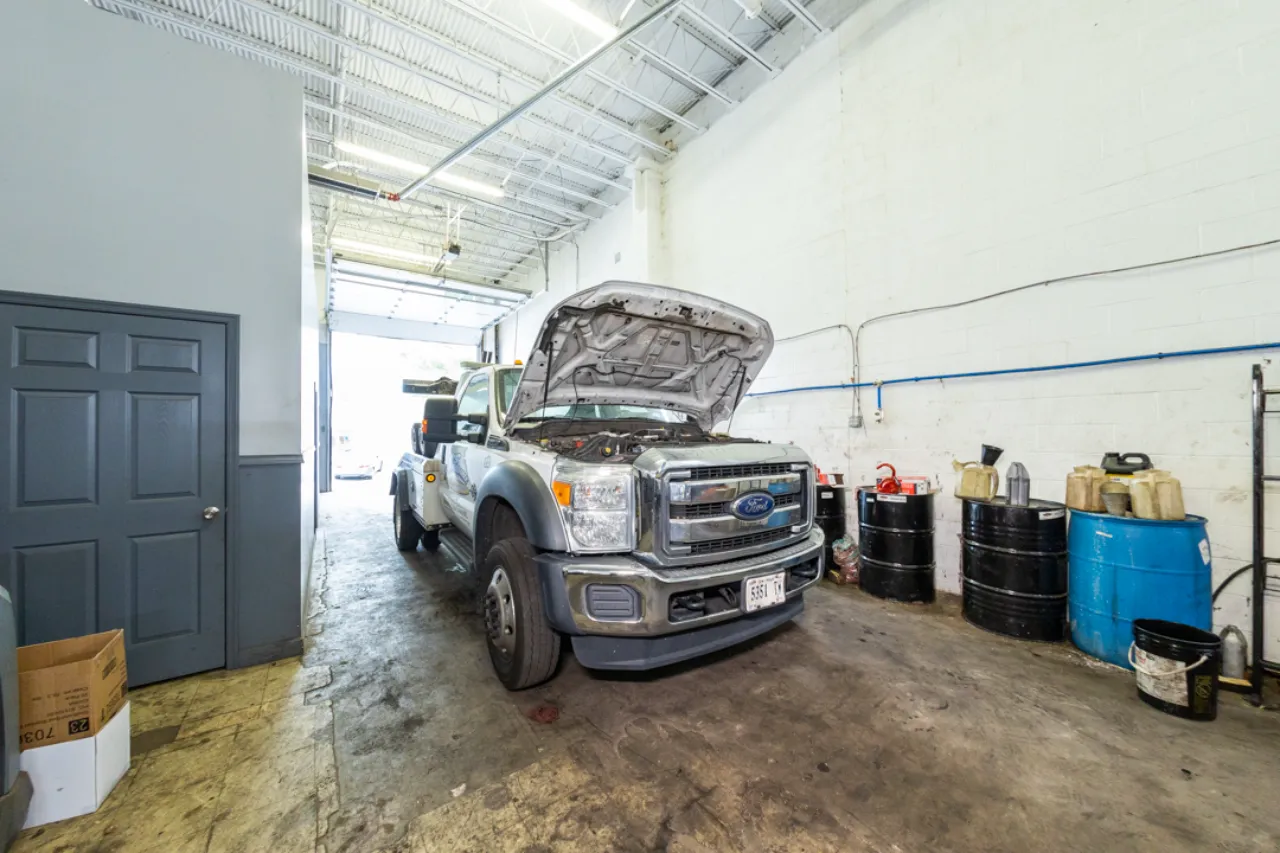The Ultimate Guide to Heavy-Duty Drivetrain Repairs for Ford F-Series Trucks

The Ford F-Series heavy-duty lineup has long been a benchmark for power, durability, and work-ready performance. Models such as the F-450, F-550, and F-750 are designed to withstand demanding operating conditions, from hauling large equipment to pulling heavy trailers. At the heart of their capability is the drivetrain, a complex system responsible for transferring the engine’s output to the wheels in a controlled, efficient manner. A well-maintained drivetrain ensures optimal performance, safety, and fuel efficiency, while neglect can lead to costly downtime and mechanical failure. Understanding the individual components of the drivetrain, recognizing early signs of trouble, and applying proper repair techniques are essential for maintaining a heavy-duty Ford truck in top working condition.
Understanding the Ford F-Series Drivetrain
The drivetrain includes all major parts between the engine and the wheels. Though configurations can differ based on the model and drivetrain type, a heavy-duty Ford truck’s system usually comprises:
- Transmission: Connects directly to the engine and utilizes different gear ratios to optimize power delivery for various speeds and loads. Heavy-duty F-Series models may feature advanced automatic, manual, or automated manual transmissions.
- Transfer Case: Found in four-wheel-drive and all-wheel-drive models, this component allows switching between two-wheel and multiple four-wheel-drive modes, and may offer low-range gearing for better torque in harsh conditions.
- Driveshafts: Cylindrical shafts that transfer torque from the transmission or transfer case to the axles. Longer wheelbase models or multi-axle configurations may employ multiple driveshafts.
- Differentials: Gear assemblies that split torque between wheels, allowing them to rotate at different speeds during cornering. Some heavy-duty applications use locking differentials to improve traction.
- Axle Shafts: The final component in the drivetrain, axle shafts transfer power from the differential to the wheel hubs.
Common Drivetrain Problems in Heavy-Duty Applications
While Ford’s heavy-duty drivetrains are durable, the high torque output and operational demands can increase wear. Common issues include:
Transmission Failures
- Symptoms: Slipping gears, rough or delayed shifts, shuddering under load, or overheating.
- Causes: Low or degraded transmission fluid, worn clutches or gears, faulty torque converters, or overheating caused by heavy towing.
- Impact: Inefficient power delivery, higher fuel consumption, and eventual loss of drive.
Transfer Case Malfunctions
- Symptoms: Grinding noises when shifting into 4WD, inability to engage or disengage drive modes, or visible fluid leaks.
- Causes: Damaged chains, worn gears, failed shift motors, or insufficient lubrication.
- Impact: Reduced off-road performance, traction issues in poor weather, and drivetrain binding in specific modes.
Driveshaft and U-Joint Wear
- Symptoms: Vibrations at specific speeds, clunking during acceleration or deceleration, or squeaking at low speeds.
- Causes: Worn U-joints, driveshaft imbalance, damaged slip yokes, or bent shafts from impact.
- Impact: Potential for complete driveline disconnection if not fixed.
Differential Damage
- Symptoms: Whining, howling, or grinding noises from the axle, poor traction, or fluid seepage at the seals.
- Causes: Insufficient gear oil, worn ring and pinion gears, failed bearings, or damaged limited-slip/locking components.
- Impact: Loss of traction, uneven power delivery, and risk of complete axle failure.
Axle Shaft and Bearing Issues
- Symptoms: Clicking during turns, wheel wobble, excessive heat at the hub, or grease leakage.
- Causes: Damaged splines, bent shafts, worn bearings, or improper lubrication.
- Impact: Unsafe driving conditions, potential wheel detachment, and costly repair work.
Repair Strategies for Ford F-Series Drivetrains
Heavy-duty drivetrain repairs require precision, proper tooling, and adherence to Ford specifications. Repairs are not limited to replacing damaged parts; they also involve restoring the correct mechanical relationships between components to ensure system harmony.
Transmission Repairs
- Fluid Service: Replace with the correct Ford-approved fluid to restore lubrication and cooling capacity.
- Clutch or Gear Replacement: Necessary for manual transmissions or when significant wear is present in gear packs.
- Torque Converter Replacement: Restores smooth engagement in automatic models.
- Valve Body and Solenoid Repairs: Common in electronically controlled transmissions to address shifting issues.
Transfer Case Overhauls
- Seal and Gasket Replacement: Prevents lubricant loss and contamination.
- Chain and Gear Replacement: Restores proper torque transfer in 4WD.
- Actuator and Motor Service: Ensures consistent engagement of drive modes.
Driveshaft and U-Joint Service
- U-Joint Replacement: Eliminates vibration and noise, restoring smooth rotation.
- Balancing Services: Corrects shaft imbalance for vibration-free operation.
- Slip Yoke Lubrication: Maintains smooth suspension travel.
Differential Repairs
- Gear Replacement and Setup: Requires precise backlash and bearing preload adjustments.
- Bearing Replacement: Extends gear life by reducing friction.
- Limited-Slip and Locker Service: Restores traction in off-road or heavy-load conditions.
Axle Shaft and Bearing Replacement
- Axle Shaft Swap: Corrects bent or damaged shafts.
- Bearing and Race Installation: Eliminates friction hotspots and overheating.
- Proper Lubrication: Ensures long-term reliability.
Preventive Maintenance Practices
Preventive maintenance is the best way to prevent expensive drivetrain repairs. Recommendations for heavy-duty Ford trucks include:
- Regular Fluid Inspections: Check and top up transmission, transfer case, and differential fluids during every oil change.
- Scheduled U-Joint Lubrication: Grease every 5,000 to 10,000 miles, or sooner if conditions are severe.
- Seal Inspections: Identify and address leaks before fluid loss causes internal damage.
- Operational Checks: Test 4WD engagement and listen for abnormal noises during each maintenance cycle.
- Compliance with Severe-Duty Intervals: Follow Ford’s guidelines for vehicles used in towing, hauling, or dusty environments.
Indicators for Immediate Service
If any of the following symptoms occur, prompt inspection is advised to prevent secondary damage.
- Persistent drivetrain vibration.
- Grinding or whining from the transmission or differential.
- Difficulty engaging gears or 4WD modes.
- Visible fluid leaks beneath the truck.
- Burning odours from under the chassis.
Conclusion
The drivetrain in a Ford F-Series heavy-duty truck is a precisely engineered system built for durability and dependability under demanding loads. Regular maintenance, early detection of problems, and professional repairs are crucial for maintaining its performance. By understanding how it works, addressing issues quickly, and following the manufacturer's service schedules, operators can maximize uptime, safety, and return on investment for their heavy-duty trucks.
More Articles
.webp)
5 Common Brake System Myths That Could Be Putting Your Fleet at Risk
.webp)
How to Use ECM Data to Predict Engine Failures Before They Happen

